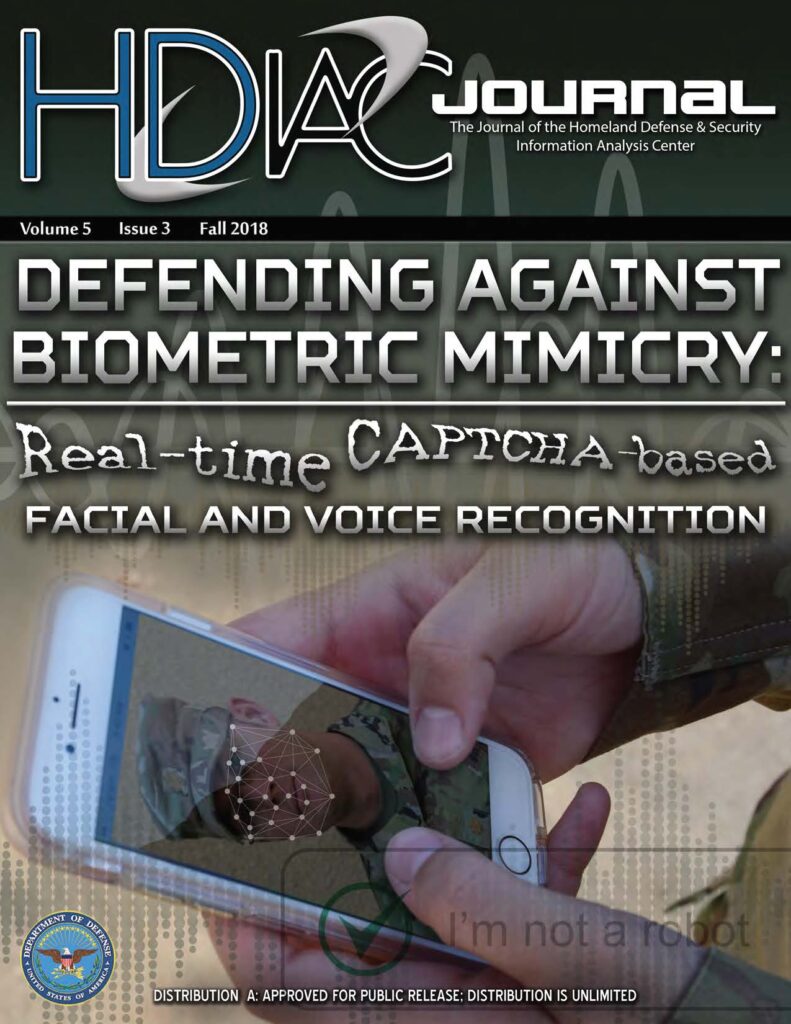This issue of the HDIAC Journal provides readers with insight on six of HDIAC’s eight focus areas. First, the Biometrics article—illustrated on the Journal’s cover—presents a novel way of defending against biometric mimicry or “spoofing” in identity verification. Next, the CBRN Defense article details the U.S. Army’s testing of a biologically-based sensor used to detect chemicals in drinking water. The Critical Infrastructure Protection article focuses on a biosensor capable of detecting hydrocarbon leaks from pipelines. The Homeland Defense & Security article surveys technologies capable of non-invasively detecting infectious disease at ports of entry. The first Medical article discusses a biocompatible and portable surgical sealant (MeTro) and its potential for battlefield use. The second Medical article focuses on the use of sweat in monitoring warfighter health. Finally, the Weapons of Mass Destruction (WMD) article is the third of a three-part series on emerging technologies that can be used in WMDs and focuses on 3D printing.

Fall 2018: Volume 5 Issue 3
Published: September 11, 2018

